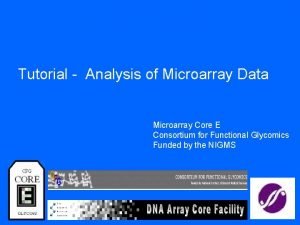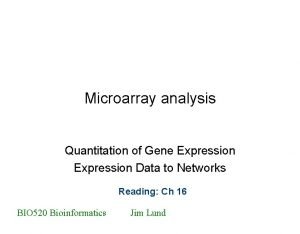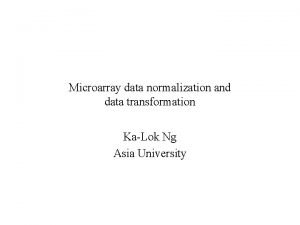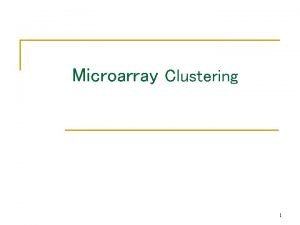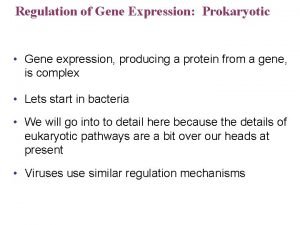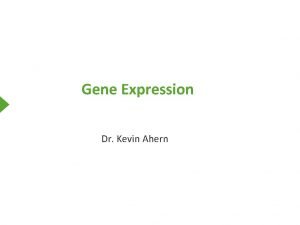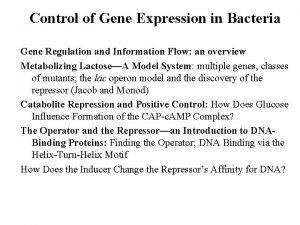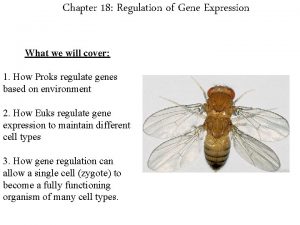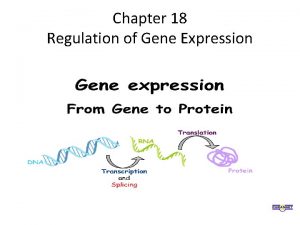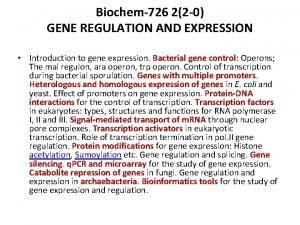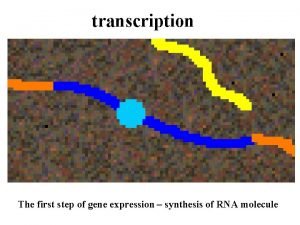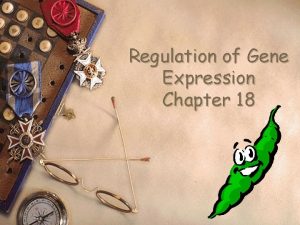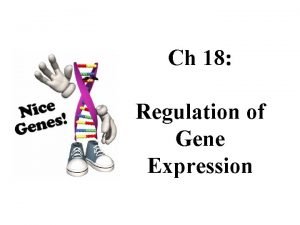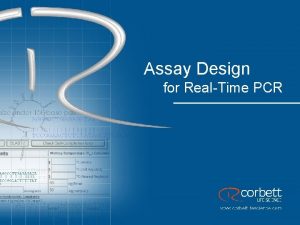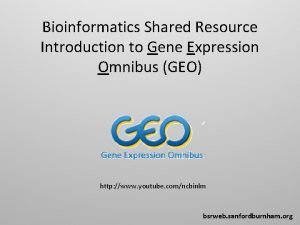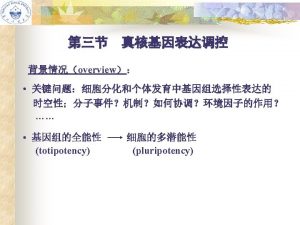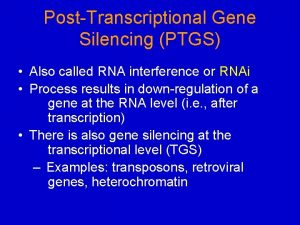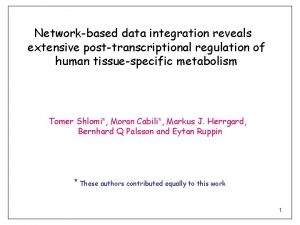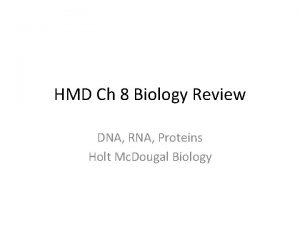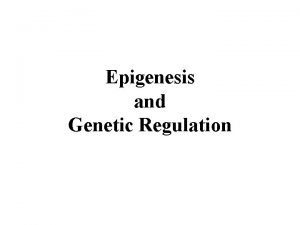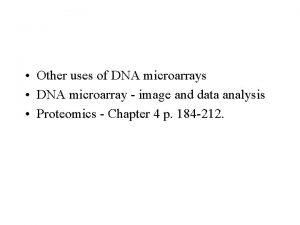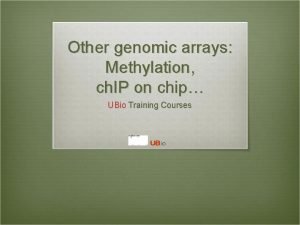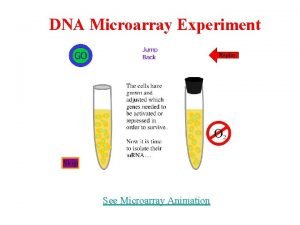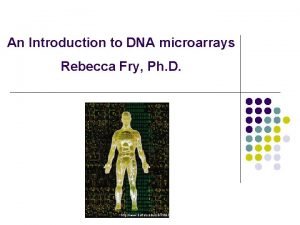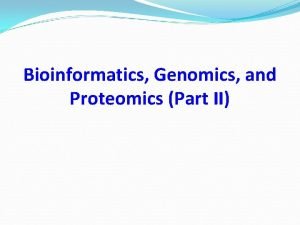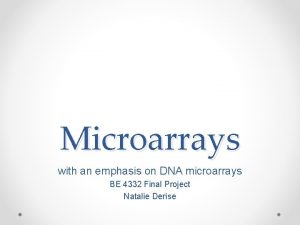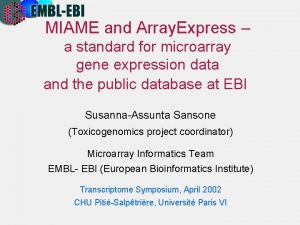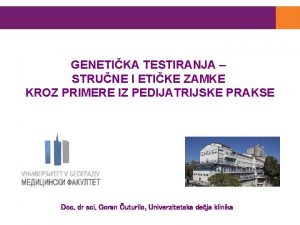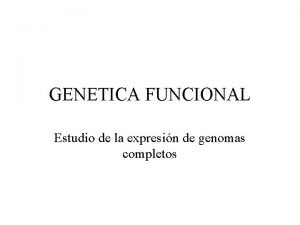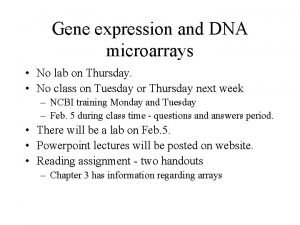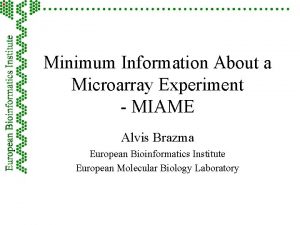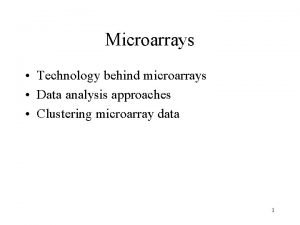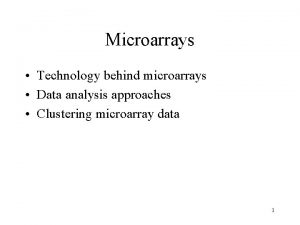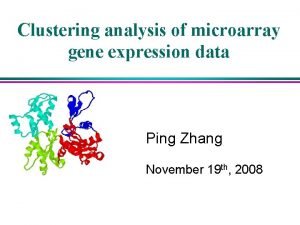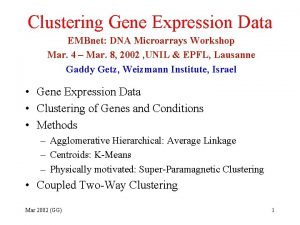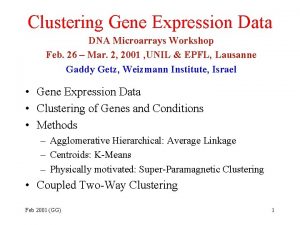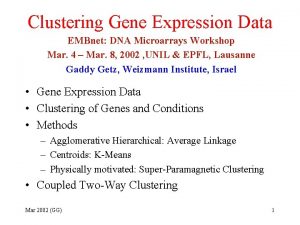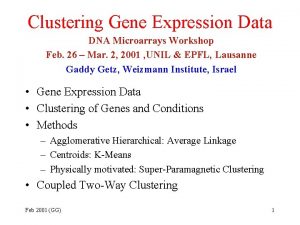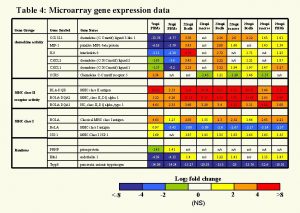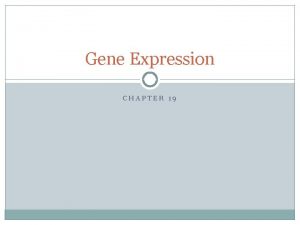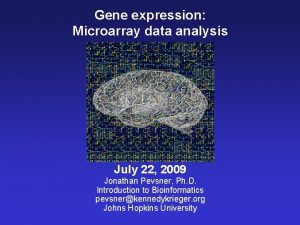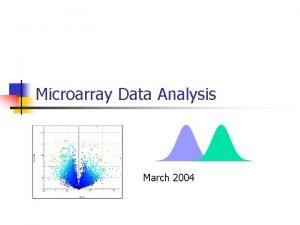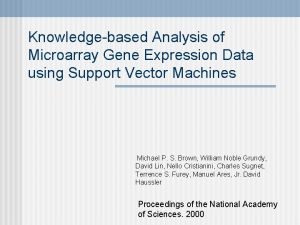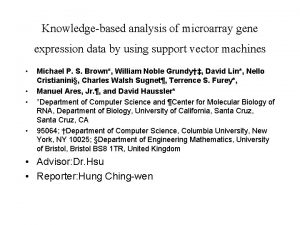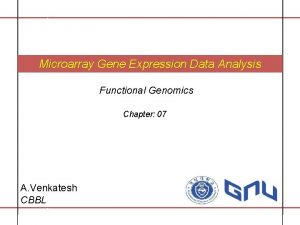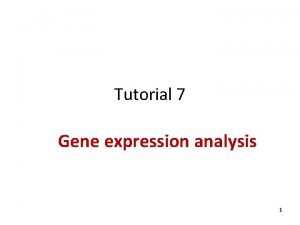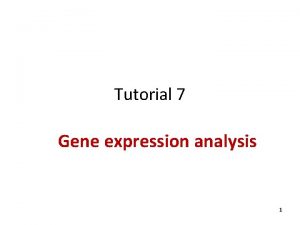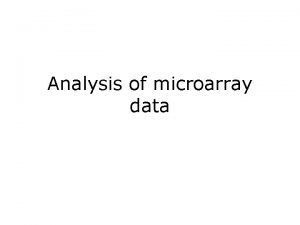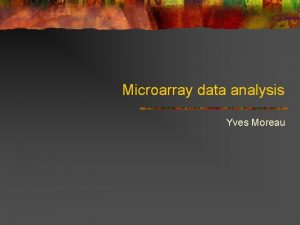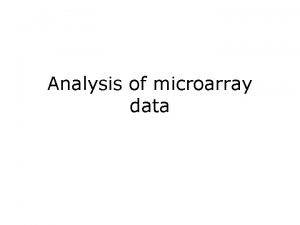Clustering Outline microarray data analysis Gene expression Microarrays







































- Slides: 39

Clustering

Outline: microarray data analysis Gene expression Microarrays Preprocessing normalization scatter plots Inferential statistics t-test ANOVA Exploratory (descriptive) statistics distances clustering principal components analysis (PCA)

Descriptive statistics Microarray data are highly dimensional: there are many thousands of measurements made from a small number of samples. Descriptive (exploratory) statistics help you to find meaningful patterns in the data. A first step is to arrange the data in a matrix. Next, use a distance metric to define the relatedness of the different data points. Two commonly used distance metrics are: -- Euclidean distance -- Pearson coefficient of correlation Page 203

What is a cluster? A cluster is a group that has homogeneity (internal cohesion) and separation (external isolation). The relationships between objects being studied are assessed by similarity or dissimilarity measures.

Background § Clustering is one of the most important unsupervised learning processes that organizing objects into groups whose members are similar in some way. § Clustering finds structures in a collection of unlabeled data. § A cluster is a collection of objects which are similar between them and are dissimilar to the objects belonging to other clusters.


Motivation I • Microarray data quality checking – Does replicates cluster together? – Does similar conditions, time points, tissue types cluster together?

Motivation II • Cluster genes Prediction of functions of unknown genes by known ones

Functional significant gene clusters Two-way clustering Sample clusters Gene clusters

Motivation II • Cluster genes Prediction of functions of unknown genes by known ones • Cluster samples Discover clinical characteristics (e. g. survival, marker status) shared by samples.

Bhattacharjee et al. (2001) Human lung carcinomas m. RNA expression profiling reveals distinct adenocarcinoma subclasses. Proc. Natl. Acad. Sci. USA, Vol. 98, 1379013795.







Hierarchical Clustering Calculate the similarity between all possible combinations of two profiles Two most similar clusters are grouped together to form a new cluster Calculate the similarity between the new cluster and all remaining clusters. Keys • Similarity • Clustering





















 Chapter 17: from gene to protein
Chapter 17: from gene to protein Nyt top stories
Nyt top stories Partitional clustering vs hierarchical clustering
Partitional clustering vs hierarchical clustering Rumus distance
Rumus distance Microarray data analysis tutorial
Microarray data analysis tutorial Dna rna protein
Dna rna protein Microarray
Microarray Gene by gene test results
Gene by gene test results Clustering outline
Clustering outline Poltrp
Poltrp Gene expression:
Gene expression: Regulation of gene expression in bacteria
Regulation of gene expression in bacteria Chapter 18 regulation of gene expression
Chapter 18 regulation of gene expression Chapter 18 regulation of gene expression
Chapter 18 regulation of gene expression Regulation of gene expression
Regulation of gene expression What is the first step in gene expression
What is the first step in gene expression Chapter 18 regulation of gene expression
Chapter 18 regulation of gene expression Genetic effects on gene expression across human tissues
Genetic effects on gene expression across human tissues Lac operon positive control
Lac operon positive control Ch 18+
Ch 18+ Taq polymerase
Taq polymerase Gene expression omnibus tutorial
Gene expression omnibus tutorial Gene expression
Gene expression Gene expression
Gene expression Gene expression
Gene expression Gene expression
Gene expression Prokaryotes vs eukaryotes gene regulation
Prokaryotes vs eukaryotes gene regulation Cells must control gene expression so that __________.
Cells must control gene expression so that __________. Lyonization of gene expression
Lyonization of gene expression Uses of dna microarray
Uses of dna microarray Methylation & chip-on-chip microarray platform
Methylation & chip-on-chip microarray platform Microarray animation
Microarray animation Rna quality control
Rna quality control Protein microarray
Protein microarray Dna microarray
Dna microarray Microarray
Microarray Hromozomski microarray
Hromozomski microarray Amprenta genetica
Amprenta genetica Microarray types
Microarray types Minimum information about a microarray experiment
Minimum information about a microarray experiment




